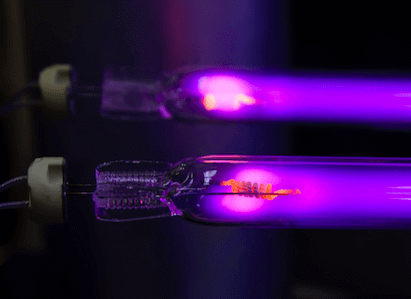Although we're blessed with a mostly dry climate in the South Bay, overly humid conditions can occur in local homes for one reason or another. When that happens, mold, mildew and fungus are often the result.
Along with mold comes a concern about indoor air quality. One of the most effective ways to fight mold in your home's air is with ultraviolet (UV) lights.
WHAT IS UV LIGHT?
UV refers to light rays of shorter wavelengths than those at the visible end of the light spectrum, but longer than X-rays. UV light has long been known to be effective as a disinfectant. It has been used to kill bacteria and viruses in hospitals, as well as in research labs and industrial settings. UV light technology for disinfection of HVAC systems, known as ultraviolet germicidal irradiation (UVGI) technology, has become increasingly more common for improving indoor air quality in homes over the last decades.
INSTALLING UV LIGHTS
UVGI systems should be properly installed by an HVAC technician.
The lights consist of strong bulbs that are strategically placed for maximum impact as they shine on incoming air in the HVAC system. They are generally located near the evaporator coils, where condensation may gather and create conditions ripe for mold, mildew and fungus. They are also usually installed in a return duct, where air is treated as it is drawn into the system and before it is distributed into the home.
High humidity in a home may result in excess moisture in the air conditioner, with mold colonizing evaporator coils or ductwork. UV lights, which disrupt an organism's DNA so it cannot reproduce, are considered an effective solution for dealing with mold, mildew and fungus spores, as well as bacteria and viruses in the home's air.
Bulbs generally last a year to two years. They are most effective when the light is strong so they should be changed regularly.
Visit the Valley Heating, Cooling, Electrical website for in-depth information on UV lights and other HVAC topics, or just call us at (408) 868-5500.
Our goal is to help educate our customers in the South Bay Peninsula and Santa Cruz areas of California about energy and home comfort issues (specific to HVAC systems).

